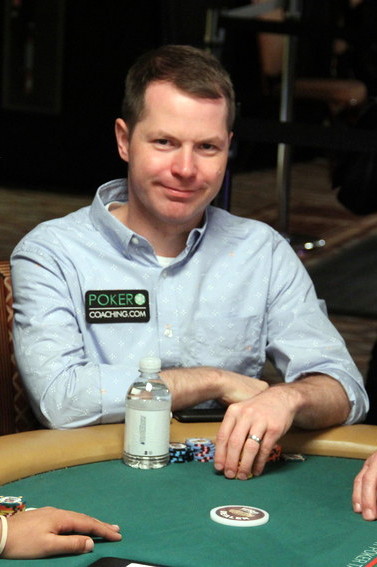






Stop Slowplaying!by Jonathan Little | Published: Mar 20, 2024 |
|
|
 If you want to increase your poker skills and learn to crush the games, check out Jonathan Little’s elite training site at PokerCoaching.com/CardPlayer.
If you want to increase your poker skills and learn to crush the games, check out Jonathan Little’s elite training site at PokerCoaching.com/CardPlayer.
I was recently told about a no-limit hold’em hand that illustrates a key concept you must master if you want to succeed at the game.
In a $1-$2 cash game, an early position player raised to $7 out of his $200 effective stack and our Hero called on the button with 3-3.
Hero’s call with his small pair is perfectly fine. When he flops a set, he will have the best hand pretty much every time and when he misses, he can easily fold to a bet. It is also nice that the initial raiser is from early position, meaning he should have a strong hand that can pay Hero off when he makes a set.
The big blind called as well. The flop came K Q
Q 3
3 , giving Hero bottom set. The big blind checked and the initial raiser bet $10 into the $22 pot.
, giving Hero bottom set. The big blind checked and the initial raiser bet $10 into the $22 pot.
Hero told me that he wanted to trap the bettor as well as the player in the big blind. While calling certainly increases the chance of trapping someone, it also allows both opponents to cheaply see the turn, which is not ideal when there are many draws available. In this spot, it is somewhat likely that either opponent has some sort of draw that raising would price out.
Also notice that if one of the opponents happens to have a strong made hand, like A-K or K-Q, Hero really wants to get money in the pot immediately before the turn brings a scary card that could force the opponent to play cautiously.
Hero decided to call and the big blind called as well. The turn was the 9 .
.
Both opponents checked to Hero who bet $40 out of his $183 stack into the $52 pot. The big blind check-raised all-in for $143 more. The initial raiser folded.
At this point, Hero is almost certainly against either a premium made hand or a draw. While Hero cannot fold (because he beats K-Q, K-9, Q-9, and the draws), he does not love this situation because he could easily be against the straight. Even then, Hero has 10 outs to improve to a full house.
Hero thought for a while before calling. He lost to his opponent’s J-10 when the river did not pair the board. The initial raiser claimed he folded A-K, top pair, top kicker.
On the flop, if Hero simply raised (as he should do with his best made hands and draws in almost all situations) he would have played a big pot as a huge favorite against A-K. Instead, he allowed the big blind to see a cheap turn card with his marginal draw that would only invest a lot more money if it improved to a straight, instead resulting in Hero losing his entire stack.
Especially when the board contains many draws, do not slowplay!
If you want to quickly plug the 25 most common mistakes I see my students make, I put together a course called The 25 Biggest Leaks and How to Fix Them. This course is completely free inside Card Player Poker School!
When you join the Card Player Poker School (it’s free to join), you’ll also get:
 Jonathan Little is a two-time WPT winner and the 2024 PokerGO Cup champion with nearly $9 million million in live tournament earnings, best-selling author of 15 educational poker books, and 2019 GPI Poker Personality of the Year. If you want to increase your poker skills and learn to crush the games, check out his training site at PokerCoaching.com/cardplayer.
Jonathan Little is a two-time WPT winner and the 2024 PokerGO Cup champion with nearly $9 million million in live tournament earnings, best-selling author of 15 educational poker books, and 2019 GPI Poker Personality of the Year. If you want to increase your poker skills and learn to crush the games, check out his training site at PokerCoaching.com/cardplayer.
Features
Tournaments
Strategy